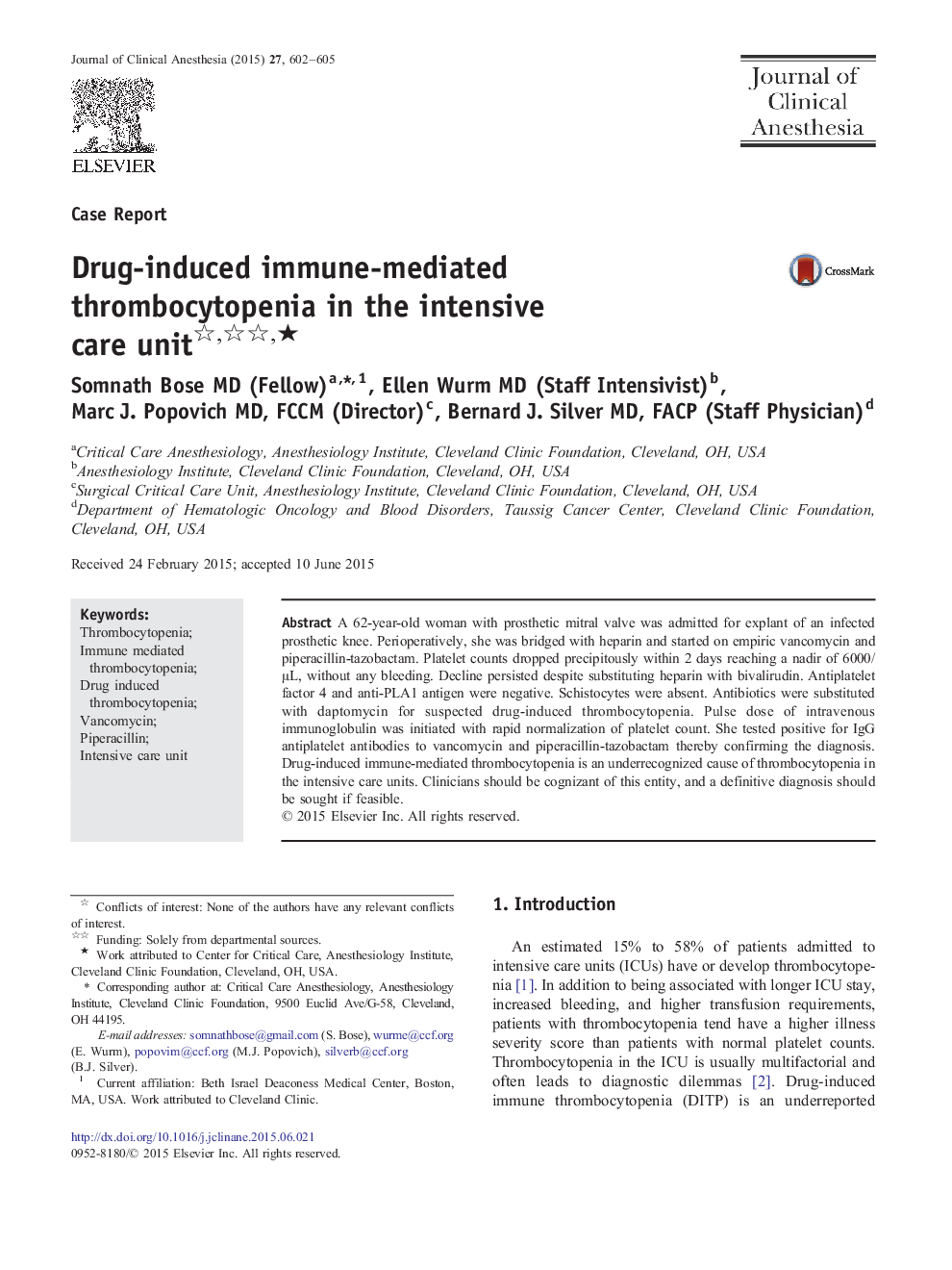| Article ID | Journal | Published Year | Pages | File Type |
|---|---|---|---|---|
| 2762500 | Journal of Clinical Anesthesia | 2015 | 4 Pages |
•Thrombocytopenia in intensive care units is multifactorial, and an etiologic diagnosis is often challenging.•Immune-mediated thrombocytopenia is a potential cause of severe thrombocytopenia in the intensive care units.•Diagnosis can be challenging because many potential offenders are concurrently used.•A definitive diagnosis should be sought to prevent future exposures to offending medications.
A 62-year-old woman with prosthetic mitral valve was admitted for explant of an infected prosthetic knee. Perioperatively, she was bridged with heparin and started on empiric vancomycin and piperacillin-tazobactam. Platelet counts dropped precipitously within 2 days reaching a nadir of 6000/μL, without any bleeding. Decline persisted despite substituting heparin with bivalirudin. Antiplatelet factor 4 and anti-PLA1 antigen were negative. Schistocytes were absent. Antibiotics were substituted with daptomycin for suspected drug-induced thrombocytopenia. Pulse dose of intravenous immunoglobulin was initiated with rapid normalization of platelet count. She tested positive for IgG antiplatelet antibodies to vancomycin and piperacillin-tazobactam thereby confirming the diagnosis. Drug-induced immune-mediated thrombocytopenia is an underrecognized cause of thrombocytopenia in the intensive care units. Clinicians should be cognizant of this entity, and a definitive diagnosis should be sought if feasible.
